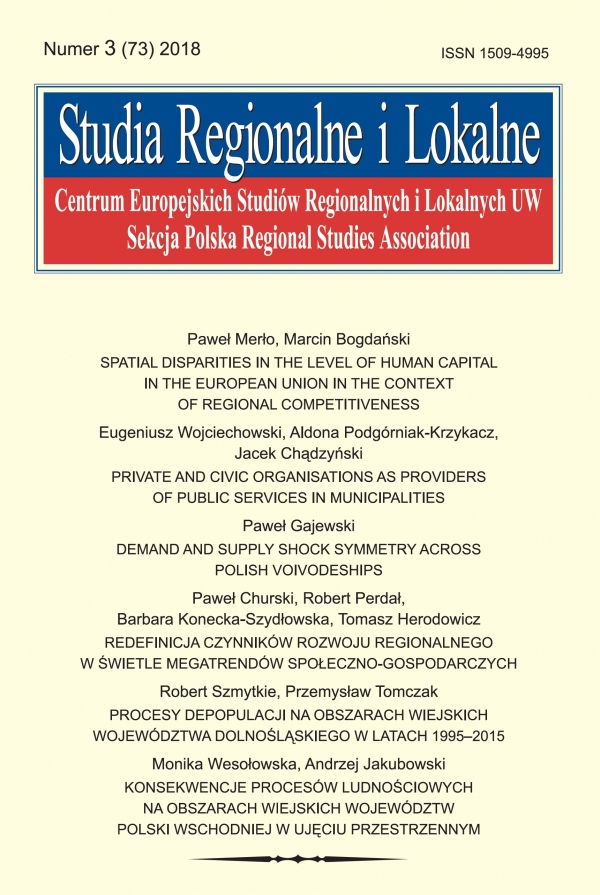Opublikowano w numerze
3(73)/2018

- Paweł Merło, Marcin BogdańskiSpatial disparities in the level of human capital in the European Union in the context of regional competitiveness[więcej]
- Eugeniusz Wojciechowski, Aldona Podgórniak-Krzykacz, Jacek ChądzyńskiPrivate and civic organisations as providers of public services in municipalities[więcej]
- Paweł GajewskiDemand and supply shock symmetry across Polish voivodeships[więcej]
- Paweł Churski, Robert Perdał, Barbara Konecka-Szydłowska, Tomasz HerodowiczRedefinicja czynników rozwoju regionalnego w świetle megatrendów społeczno-gospodarczych[więcej]
- Robert Szmytkie, Przemysław TomczakProcesy depopulacji na obszarach wiejskich województwa dolnośląskiego w latach 1995–2015[więcej]
- Monika Wesołowska, Andrzej JakubowskiKonsekwencje procesów ludnościowych na obszarach wiejskich województw Polski Wschodniej w ujęciu przestrzennym[więcej]


